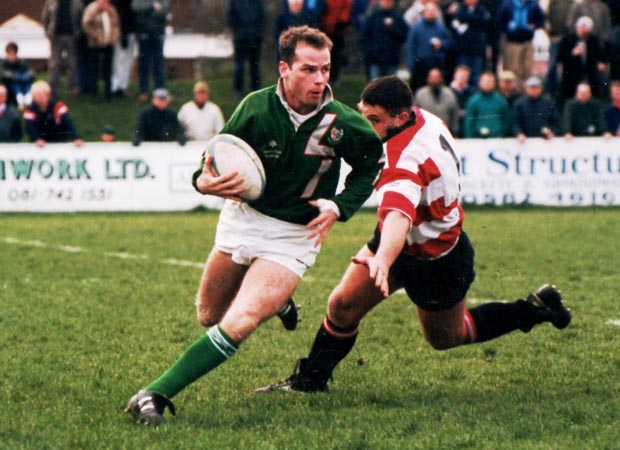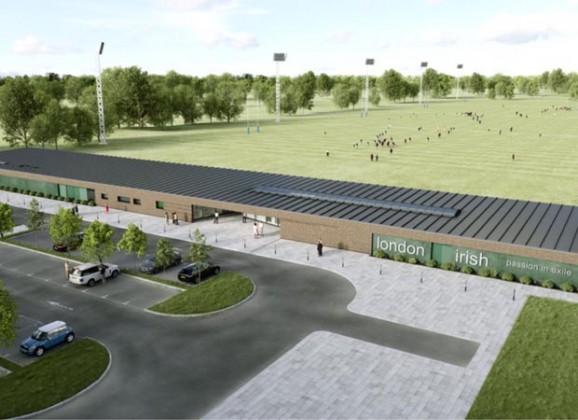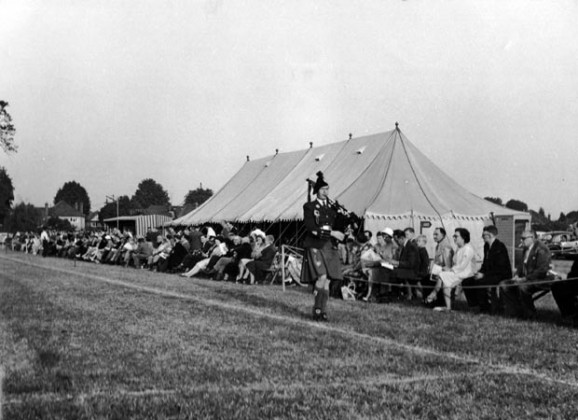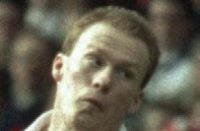 It won't just be London Irish fans and members bidding a fond farewell to Sunbury next month when the JCBs start forming an orderly queue down The Avenue as they prepare to rip up the 23-acre site and build 160 new homes. If rugby fans of a certain age nationwide were asked to recollect their top five rugby nights I guarantee at least one will have been at Sunbury where the actual game of rugby was invariably the prelude to so much else besides.
It won't just be London Irish fans and members bidding a fond farewell to Sunbury next month when the JCBs start forming an orderly queue down The Avenue as they prepare to rip up the 23-acre site and build 160 new homes. If rugby fans of a certain age nationwide were asked to recollect their top five rugby nights I guarantee at least one will have been at Sunbury where the actual game of rugby was invariably the prelude to so much else besides.
The Top Bar was always my personal favourite where you could defrost by a roaring peat fire which boasted a curious mechanical bellows contraption where those Irish players who had displeased their coach that afternoon could often be seen putting in ten-minute shifts at the coalface so to speak, keeping the bar smoke free.
Close to the fire was – still is actually although the Top Bar is now the Exiles' admin offices – the smallest of raised stages where any number of cracking traditional Irish musicians would do their stuff. They seemed to appear by magic although I suppose some sort of informal rota operated. A fiddle-playing Irish railway porter at Sunbury station, Pat Kennedy, started the tradition in the Thirties earning a meal and a bellyfull of beer for his efforts.
The Guinness was as good as any bar in Dublin and with a cliental of manically thirsty Irish exiles it had to be. When the Irish thrashed a Harlequins side containing nine internationals 62-14 in the old Allied Dunbar League exactly 16 years ago the 4,000 crowd produced bar-takings alone in excess of £40,000. Double that and you will get the modern day equivalent.
I understand the unofficial club record for a match at Sunbury is 13,000 pints of Guinness against Bath one hot afternoon, a pretty decent effort by all concerned. With four or five senior teams – Wild Geese, Vets, Extras, Casuals, B1s, Students etc – arriving back regularly through the night from away matches there was a constant floodtide of parched Irishmen filling the bar as others raised a white flag and headed for the safety and sanity of home.
If you were having a night off the Guinness the Hot Toddies were nigh on perfect with a twist of lemon stabbed with two cloves and just occasionally, if the gods looked kindly, gentlemen of the media would be beckoned into a small president's room at the far end of the Top Bar where you might find yourself munching a poached salmon sandwich and sipping a 24-year-old single malt Bushmills.
The Four Provinces Bar, down below, seemed equally as riotous on the few occasions I could be prised from the Top Bar but lacked the homely warmth of the fire while, alas, I am too young to have experienced Fitzy's Bar which by repute was the best craic of all. The stories are many and still told with relish.

Situated just inside the ground it was the old ramshackle hut which was London Irish's original changing rooms when they first moved to Sunbury in the early Thirties. After the construction of the ‘new' clubhouse and main stand in 1959 the old hut morphed into an ad hoc, but increasingly sophisticated, drinking den run by waistcoated Fitzy, a man apparently with the demeanour of a QE2 steward who required all embibers to formally sign-in every night.
Indeed, ‘Fitzy's Book' became a useful aide de memoir for some as to their exact whereabouts on some hectic weekends.
Over the years Fitzy collected thousands for charity by instituting a swear box in an attempt to impose some decorum although most big groups simply put a fiver in the jam jar on arrival in anticipation of innumerable profanities ahead.
Bawdy rugby songs per se were out but classy singing and fiddle playing was very much encouraged as indeed was old-fashioned story-telling, seanchai, although events inevitably became a little raucous and less cultural by close of play.
Coventry once tried to make a quick getaway – there was an important Warwickshire training session or somesuch the next morning – and the team coach was revved up and kitbags packed half an hour after the game when the smart, freshly-showered team boarded in orderly fashion. Alas as they went to exit the ground some bright spark suggested “just the one” in Fitzy's. Why not? Why not indeed. It was 2am before “tired and emotional” Cov eventually made the coach.
Richard Harris and Richard Burton were semi-regulars when they were in town – well they would be – with Harris habitually putting £50 behind the bar on arrival. One night he made his entrance in the company of two starlets who proceeded to conduct a striptease to increasingly frenzied and hysterical Irish music. Comedian Dave Allen was another who put in some plucky elbow work at Fitzy's, once memorably in the company of London Irish captain Len Dineen.
As Saturday night merged seamlessly into Sunday morning and the session showed no sign of ending Dineen realised that he might be in a spot of hot water with the lady wife back home but the ever willing Allen suggested a solution. He would write a note absolving Dineen of all blame for his shambolic appearance but there was a technical hitch – no paper could be found. Dineen produced his driving licence with a flourish and Allen scrawled on it: “Sorry for keeping Len out so late, best wishes Dave Allen.”
When he died in the mid-Seventies Fitzy wanted his ashes scattered on the ground, a wish enacted in a particularly well-attended ceremony conducted on halfway one Saturday lunchtime by Father Mike Blackburn, a playing member. The ceremony was getting to its emotional conclusion with signs of the cross left right and centre and the dispensing of Holy Water when the London Welsh team coach drew into the car park for their match and a confused committee man alighted: “Bloody hell boys, the Irish are taking this one a bit seriously!”

Kieran McCarthy – 34 years and counting in the club's administration – smiles at the anecdote. “I didn't witness that one, before my time, but scores of people have had their ashes scattered here and they can be odd occasions because a few drinks will usually have been taken. I remember looking up one day and a very jovial and good humoured party took to the field with the urn of their loved one and suddenly started passing it to each other rugby style. Anyway they pulled off this intricate passing movement but when the last person went to score an imaginary try by diving for the line he dislodged the urn top and some of the ashes fell to earth.
“The thing about London Irish,” continues McCarthy, the Exiles' rugby development manager, “is that for many years it was an Irish club as much as a rugby club and that gave you the fantastic mix of characters and meant the rugby itself was always put in perspective.
“In past days you didn't really have all these ‘Irish clubs' and centres around the place. If you were an Irish guy arriving in town the biggest gathering of your compatriots and the place you would be likely to bump into friends, or make some new friends, would be the London Irish rugby club down in Sunbury. The word spread.
“The professional team has been playing at Madejski a good while now but that is, say, 16 match days a year, the rest of the time we have still been based here, training at these grounds and using Sunbury as its base. Many of the players live nearby. It has been our home but the fact is we have outgrown it now.
“If you include all our age-group teams, from the ages of 6 to 18, we've got 20-plus teams and just four pitches these days and the time is right for a move.
“Hazelwood is no distance, in fact you can see the floodlights of our new home from this old stand, so we don't think it'll affect the spirit and the feel of the club. I'm not sure we've got a coal fire at the new place but I'll make sure it comes with us anyway as a nod to the past.”
A glorious past. Craic



























